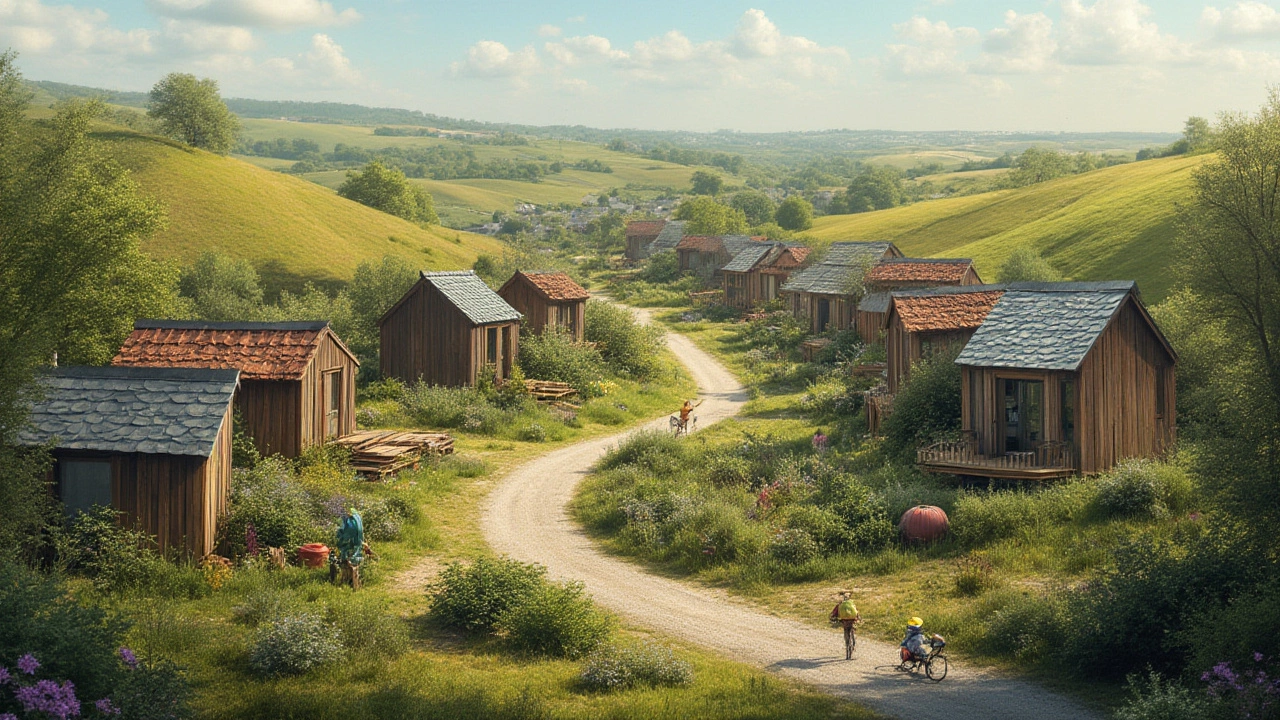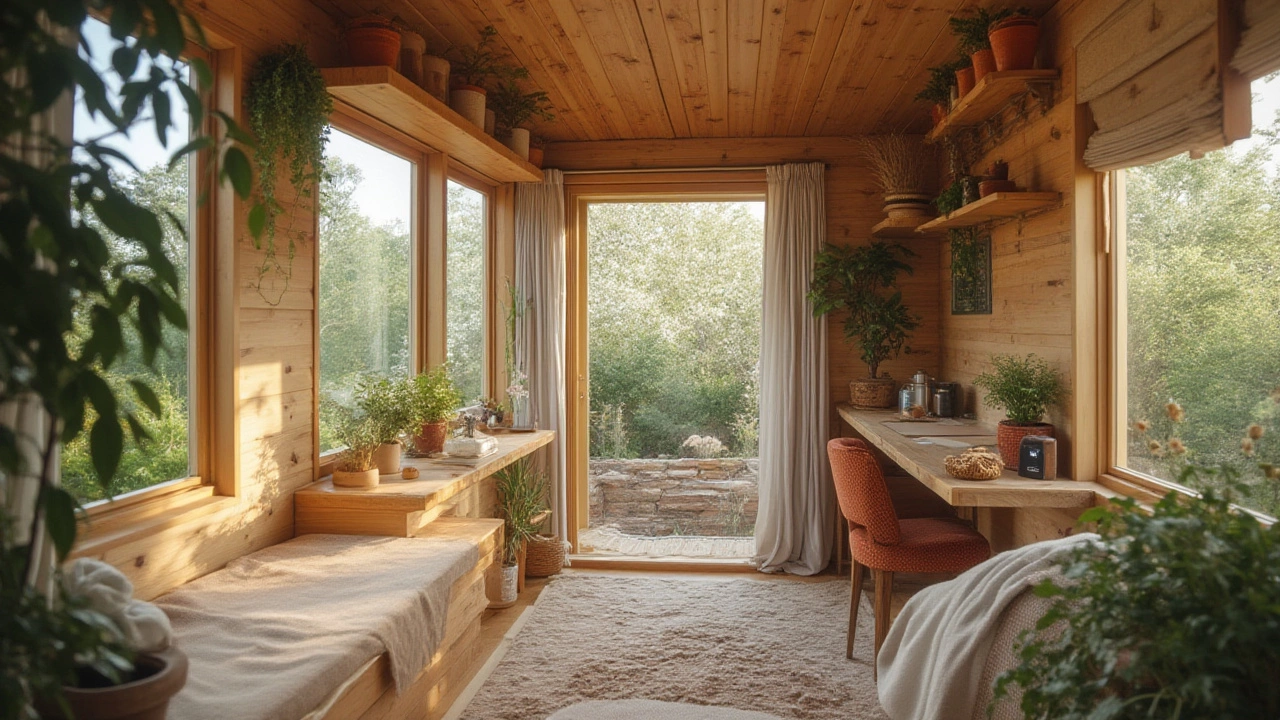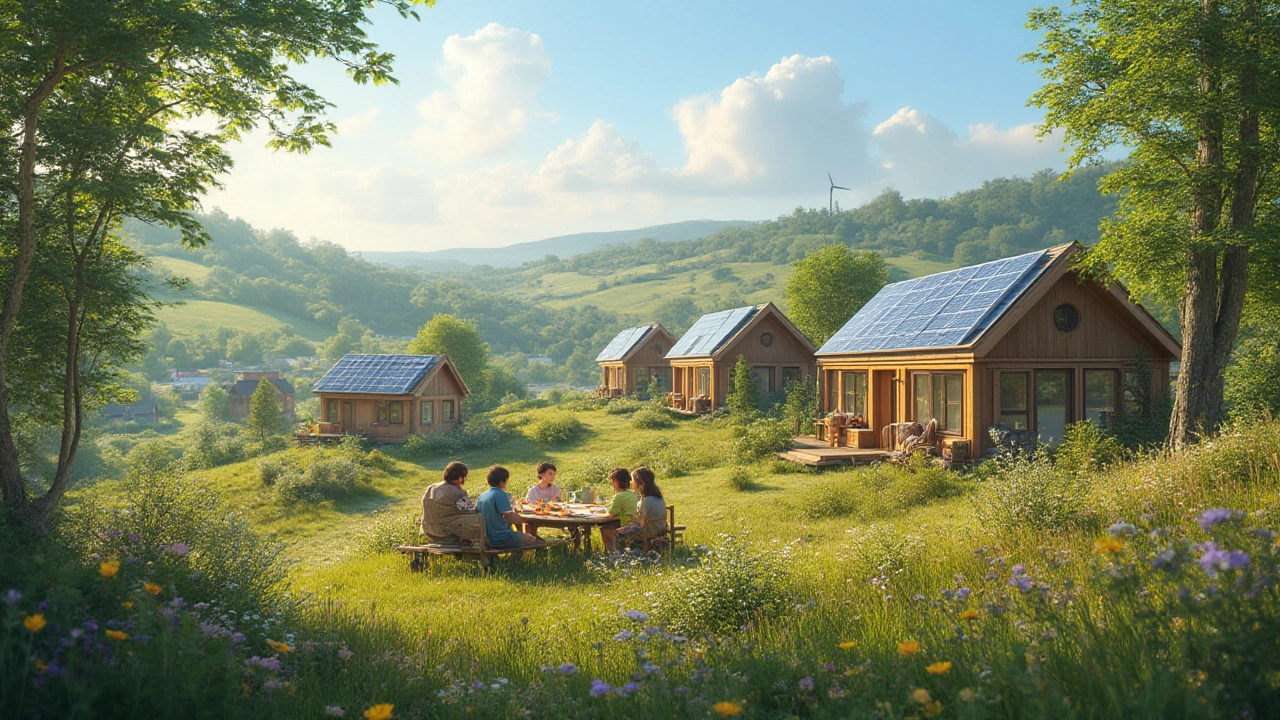Tiny Houses and Sustainability: How Small Homes Save Energy, Water, and the Planet
4 Jul, 2025So picture this: you're waking up in a house about the size of some folks' living rooms, sipping coffee in a sunlit nook, surrounded by just what you need—and nothing more. Tiny houses are everywhere these days, dotting backyards, tucked into mountainsides, and popping up in bustling cities. They're pretty charming, but their biggest secret? They're kind of a powerhouse when it comes to green living. Tiny houses are making a genuine dent in the way we think about sustainability—not because they’re a Pinterest trend gone wild, but because living small really does mean eco-friendly living in some very real ways.
Less Space, Less Waste: Small Footprint, Big Impact
Start with something obvious: less space means less stuff. When your kitchen doubles as your office and your closet shares space with your pantry, collecting things just isn’t possible. Most tiny houses in the U.S. fall between 100 and 400 square feet. For context, the average new American house is creeping up toward 2,500 square feet. That’s not just a design difference—it’s a massive resource shift. One study showed building a tiny house uses, on average, just 7 percent of the materials and energy compared to traditional homes. Smaller footprints also mean fewer resources pulled from the planet in the first place: less lumber, insulation, drywall, and wiring. Smaller roofs mean more efficient rainwater harvesting. Need fewer shingles? Fewer go to landfills when it’s finally time to renovate.
Living tiny also puts a serious hold on the garbage we create during construction. Builders who specialize in small homes habitually reuse materials—old barn wood, surplus windows, recycled steel—which not only trims costs but keeps usable stuff out of the landfill. A 2022 report out of Oregon State University found that about half of tiny home builders relied on reclaimed or recycled materials for at least 50% of each new build.
Here’s the kicker: less space doesn’t just trim stuff, it naturally curbs your energy appetite. It’s nearly impossible to lose track of lights left on in a tiny home. When every square foot counts, everything pulls double duty and you become intensely aware of what you’re using and what you’re wasting.
Cranking Down Consumption: How Tiny Houses Slash Energy Bills
Let’s talk concrete numbers. The single largest user of energy in most homes is heating and cooling. Tiny homes demand a fraction of the energy a regular home chews up. Why? With less air to heat or cool, those tiny HVAC systems don’t run half as hard. A tiny home resident in Vermont compared her winter utility bill to the one she paid in a 2,000-square-foot suburb house. She sliced her heating costs by close to 75 percent. Talk about instant climate action.
On average, tiny houses use about 80 percent LESS energy than traditional homes. It’s not just because of their size, though. Most tiny houses are built with modern insulation—think spray foam or dense-packed cellulose that outperforms what’s in lots of older homes. High-efficiency windows and doors are standard, and almost every inch of space is designed to avoid drafts or leaks. Solar is an obvious pair for these little abodes; keeping the lights on with a modest rooftop solar system is totally within reach if you’re only powering a few LED bulbs, a laptop, and maybe a tiny refrigerator.
Daylight design also plays a part. With so few walls and such a tight layout, it’s easy to get natural sunlight flooding every corner. That means fewer lights switched on all day long. There are off-grid tiny homes out there in Colorado and New Zealand—yes, you read that right—that run 100% off of solar power. No fossil fuels. No grid ties. That’s energy independence and environmental action rolled up in one 200-square-foot package.

Water Wisdom: Saving H2O in a Tiny Home
Water’s getting scarce in a lot of places, and tiny homes have stepped up with some smart solutions. If your whole home is under 400 square feet, you’re not likely running a giant tub, jacuzzi, or triple-head shower. Water-saving fixtures—think low-flow toilets, compact water heaters, efficient showerheads—come standard in most builds. Some tiny houses even use composting toilets, which cut out traditional sewage use altogether.
Rainwater collection isn’t just a pipe dream either. Because tiny homes have smaller roofs, it might sound like less rain gets collected—but there’s less need, too. In Oregon, it’s common for tiny house dwellers to rely on rainwater barrels for gardening and even filtering for indoor use. Greywater recycling setups are becoming a hot tip: They reroute water from sinks and showers to feed garden beds or flush toilets. One couple in Texas shared how they reuse up to 90% of their indoor water—triple-filtered and safe for everything except drinking.
If you’re connected to city water, your bill shrinks. If you’re off-grid, you end up harvesting and filtering what you use. You think a lot more about every drop when you see your supply every day. Living tiny almost forces you to become a water-saving expert—even without trying.
Reducing the Carbon Footprint: Living Light on the Planet
When you look at the lifetime emissions of a house, the numbers are wild. The smaller the house, the smaller the carbon footprint. A research group in Virginia figured that a traditional house belches out nearly 50 tons of carbon dioxide a year, once you figure in all the energy, commuting, and maintenance. For tiny houses, that plummets to around 2,000 pounds—or about 1 ton—a year. Part of it is because there’s just less space and less stuff. But more goes to how tiny house dwellers change their habits. Smaller fridges mean you buy less food at one time, and studies from the University of Michigan show that folks living tiny waste about a third less food. Less storage means less tendency to hoard.
Mobility makes a difference too. A good chunk of tiny homes are built on wheels, so people who live in them move closer to work, or even travel with seasonal jobs, trimming out the daily commute or at least making it less frequent. Bike storage is built right into many tiny homes, and a lot of residents intentionally park or build close to local shops or bus stops, which makes ditching the car possible. Even if you keep a car, fewer trips become the norm.
Here’s a quick data snapshot:
| Aspect | Traditional Home | Tiny Home |
|---|---|---|
| Average Square Feet | 2,500 | 200 |
| Annual CO2 Emissions | ~50 tons | ~1 ton |
| Average Annual Energy Use (kWh) | 12,000 | ~1,440 |
| Annual Water Use (gallons) | 90,000 | ~10,000 |
Living lighter and smarter stacks up when you multiply it by thousands of people all making these changes. It’s not just about ditching square footage, but about ditching habits that have been tough on the planet for decades.

Tiny House Tips for Maximum Eco Benefits
Thinking about making the jump? Or maybe you’re just hoping to borrow a little of that tiny house magic for your own life. There are a bunch of ways to wring out the most green goodness from whatever size home you land in.
- Go with energy-efficient appliances. New models—especially in the tiny house world—use much less juice, and a small place means you need less heating and cooling power anyway.
- Opt for renewable energy. Even a few solar panels can power the basics if your needs are low.
- Sneak in passive design. Big south-facing windows? Great for warming up in winter. Overhangs or shade trees? Help cool things down in the summer.
- Reuse building materials. Salvaged wood, metal, and windows do more than keep costs down—they slash the environmental impact of building from scratch.
- Compost! Tiny houses often make composting easy. Homeowners in tiny spaces say it takes only 10 minutes a week to deal with scraps.
- Rethink your stuff. Every new purchase should earn its keep. Look for versatile items—like a fold-out dining table or a bed that doubles as a couch.
- Use eco-friendly finishes. Low-VOC paints and stains improve air quality—no weird odors or chemical headaches in cozy quarters.
- Collect rainwater for gardens or even household use. A system as simple as a barrel under a downspout is a classic first step.
And if you’re not ready to go 100% tiny, try borrowing just one idea—add a rain barrel to your garden, switch to energy-efficient bulbs, or downsize your next furniture buy.
The tiny house movement is really all about enough. Enough room, enough comfort, enough stuff—without tipping into waste. Maybe that's why it feels so freeing. Living in a tiny house isn’t everyone’s dream. But if eco-friendliness is your thing, you can bet tiny homes are punching way above their weight when it comes to taking care of the planet.

 by
by